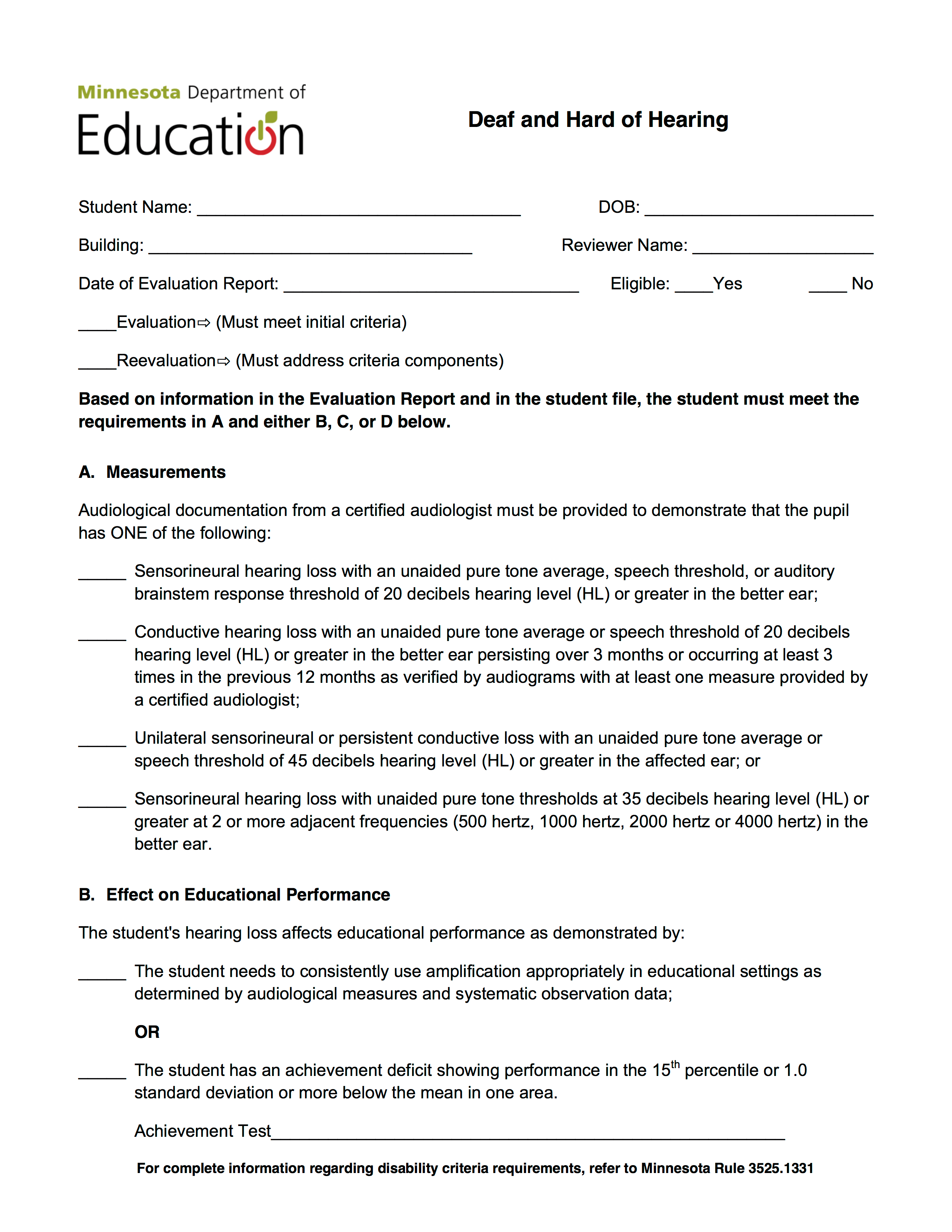
Hearing Impairment
Disability Label & Prevalence |
Definition |
General Characteristics |
Identification & Assessment |
Educational Approaches |
Educational Placement Alternatives |
Hearing Loss 0.1% of General Population |
IDEA – Loss in hearing, whether permanent or fluctuating, that adversely affects a child’s education performance but that is not included under the definition of deafness. |
Can use their hearing to understand speech, generally with the help of hearing aide, issues with English literacy, speaking, academic achievement, and social functioning. |
Assessment of Infants Pure-Tone Audiometry, Speech Reception Test, Alternative Audiometric Techniques |
Oral/Aural Approaches: auditory learning, speechreading, cued speech; Total Communication: manually coded English, fingerspelling; American Sign Language |
General Education Resource Rooms Separate Classrooms |
Description of 2 evidence-based strategies |
Bilingual-Bicultural (Bi-Bi): Emphasizes the early use of American Sign Language (ASL) because it is a natural language that permits children who are deaf to go through stages of language acquisition. ASL is used as the language of instruction, and English is taught by reading and writing. Both English and ASL are valued, as the cultures. (Fiedler, 2001) Total Communication: Focuses on using the individual child’s preferred modes of communication. It includes oral, auditory, speech reading, sign language, writing and gestures. (Fiedler, 2001) |
Practitioner Based Article related to this area: Include reference and summary of the article. |
Students With hearing loss attending general education classrooms have been reported to experience difficulties in social skills and relationships. This 5-year longitudinal study examined the social skills and problem behaviors of students who were deaf or hard of hearing, and who attended general education classrooms. Data were obtained from classroom teachers and students themselves. The mean Social Skills and Problem Behavior scores (Social Skills Rating Scales; Gresham & Elliott, 1990) were within the average range and normally distributed each year. The average change over 5 years in social skills and problem behavior was not significant. The most consistent predictors of social outcomes were the students' classroom communication participation and participation in extracurricular activities (Anita, Jones, Luckner, Kreimeyer, & Reed, 2011). |
MN Eligibility Checklist

